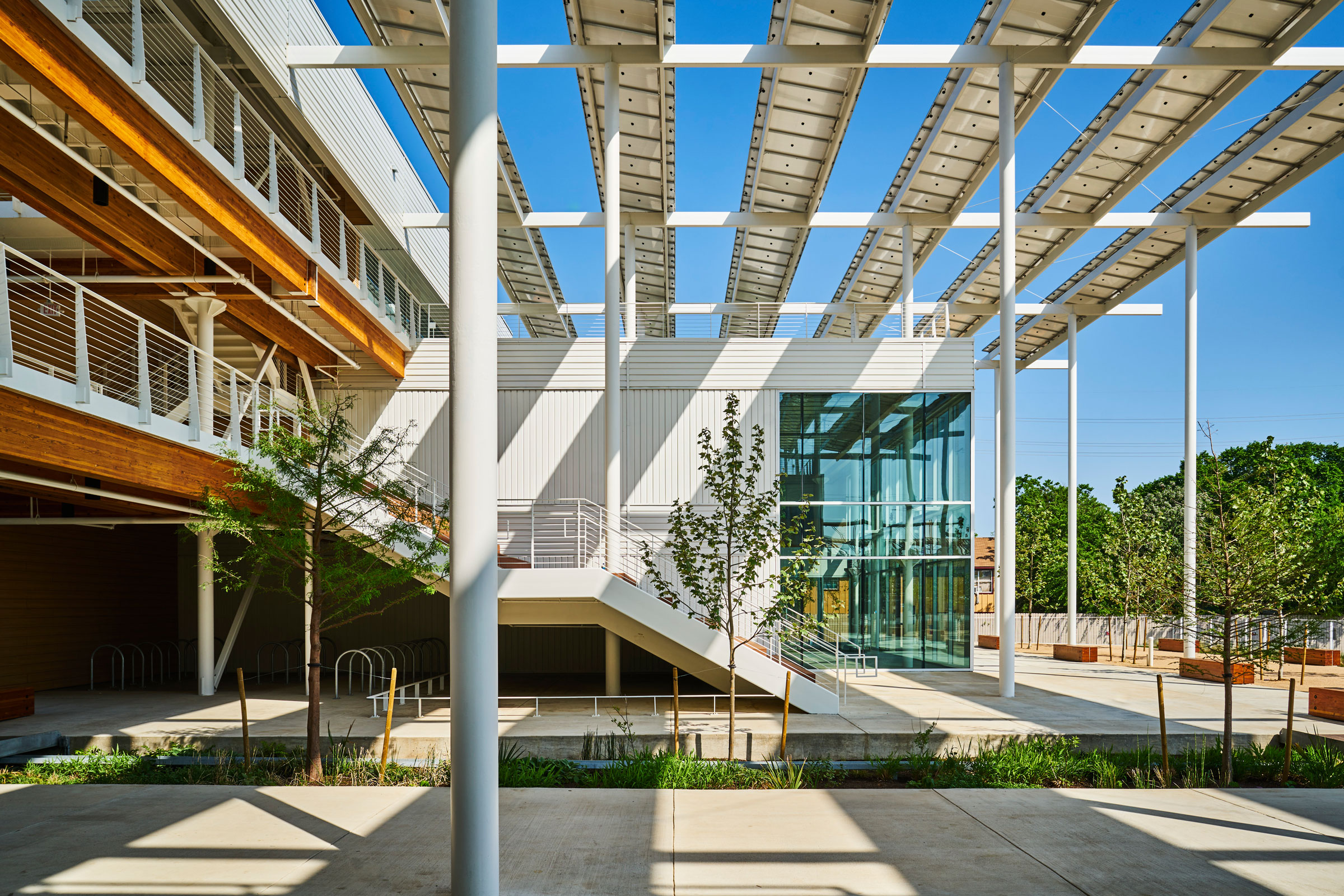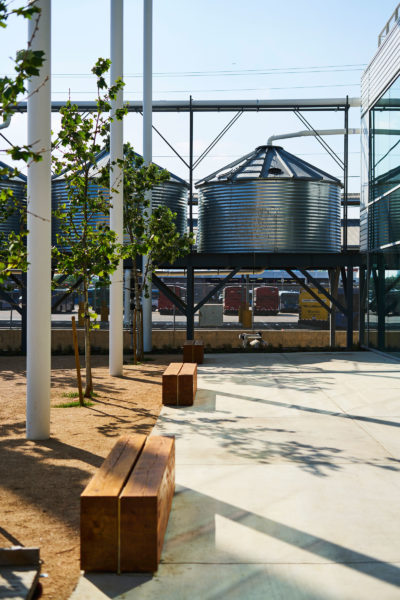Story at a glance:
- A new East Austin office building for creative companies replaces a former post-industrial site.
- The Gensler team strived to design a project that wasn’t just great for work but that also improved building performance.
- Plentiful daylight, access to fresh air, and abundant plant life are key parts of this project’s biophilic design strategy.
Fifth +Tillery, a wellness-focused office building, is the result of a design-build collaboration between the client and Gensler to reimagine the possibilities of a post-industrial site in East Austin. The project started with the ask to reposition a large 300-by-200-foot warehouse as a place for creative companies to come together. The client also wanted the design to minimize the environmental impact and create a positive contribution to the surrounding neighborhood.
With the site at the junction between an industrial area to the south and the vibrant Govalle neighborhood to the north, it was important the approach celebrate and soften the transition between the two contrasting districts. There was only one main constraint—the design team had to work within the footprint of the existing warehouse as part of the adaptive re-use entitlement process.
The Office Building Turned Inside Out
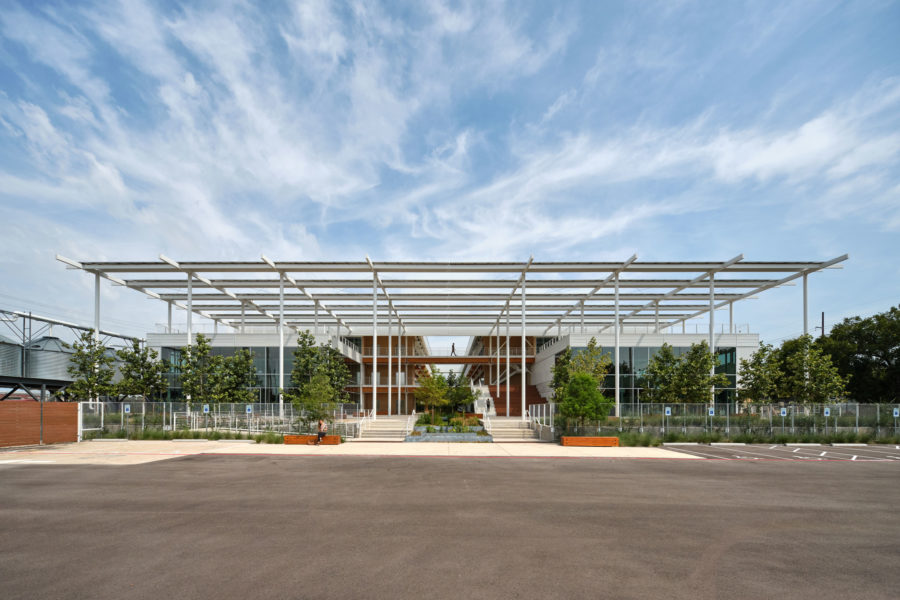
Outside Fifth + Tillery, designed by Gensler. Photo by Matthew Niemann
As we set out to design the building, the client challenged the team to be curious and look for ways to do more within the constraints. How could we design a building that was not only a great place to work, but also improve the performance of the building and site—all while creating a place that welcomed the broader community?
We started with designing a workplace that featured ample daylighting and access to nature and fresh air, which are proven strategies for supporting employee mental health and well-being. After studying skylights, lightwells, and atriums we posed a question to the client: What if we just turn the building inside out?
By carving a central courtyard through the space and bringing the traditional core functions of an office building to the exterior, we could introduce landscaping to the warehouse footprint. In turn, this helped break down the scale of the building, drawing in daylight and fresh air to the central areas. The elevators open directly to the exterior, connecting to elevated walkways that serve as multitenant corridors. To urge employees to go outdoors and engage with each other, we created a series of varying outdoor spaces on each level—from the ground level courtyard to third floor roof terraces that overlook downtown.
In place of a traditional office lobby we designed a large entry plaza that opens to the south to capture predominant breezes for passive cooling. From there we introduced a large social stair that links the upper levels to the plaza, encouraging workers and visitors to bypass the elevators and move through the building. The space under the stair is used for onsite bike parking, with two unisex shower rooms provided in an effort to encourage more people to utilize Austin’s rich bike network for their daily commute.
Prioritizing Building Performance
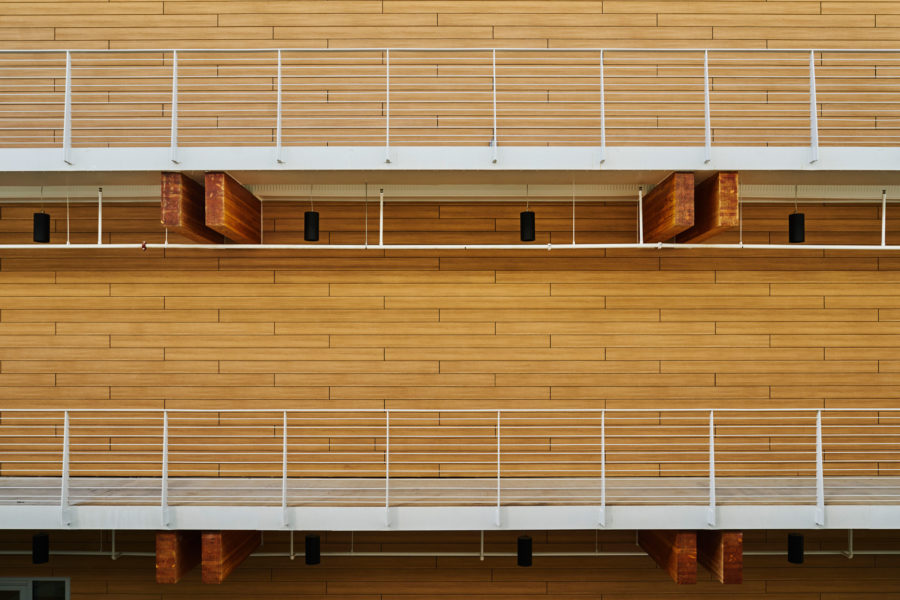
Drilled piers support the new building structure where Gensler utilized a hybrid timber structure with long span glulams paired with steel columns and concrete over a long span metal deck. Photo by Ryan Conway
With the planning of the building established, we turned our attention to improving the performance of the building and site. We began with reducing the overall carbon footprint of the project—a key goal of Gensler’s Cities Climate Challenge (GC3) to eliminate all carbon emissions in our work by 2030.
To reduce the embodied carbon we reused as much of the existing structure as possible, which included the majority of the site infrastructure and the existing warehouse foundation. Drilled piers supported the new building structure where we utilized a hybrid timber structure with long span glulams paired with steel columns and concrete over a long span metal deck. Throughout construction we also identified opportunities to minimize waste and source materials locally. A site visit with our landscape architect led to repurposing cuts from the glulam structure as benches throughout the public space.
To help mitigate operational carbon emissions we took advantage of the size of the building to provide a large solar array that provides 478 kw of power generation, almost offsetting mid-summer demand and providing a pay off in only four years. The photovoltaics also shade the roof structure, reducing the building’s solar gain. We also incorporated the photovoltaics into an overhead trellis that provides much needed shade to entry plaza while highlighting the building’s sustainable features.
- Photo by Ryan Conway
- Photo by Ryan Conway
For the landscaping we sought to do more than just feature much needed greenery to the site. We planned the central landscape area to function as an integrated rain garden, designed to slow and filter stormwater flows from the site. With nearly 100% impervious cover, it was important to reduce runoff on a site that, historically, shed large quantities of water into the nearby Boggy Creek watershed.
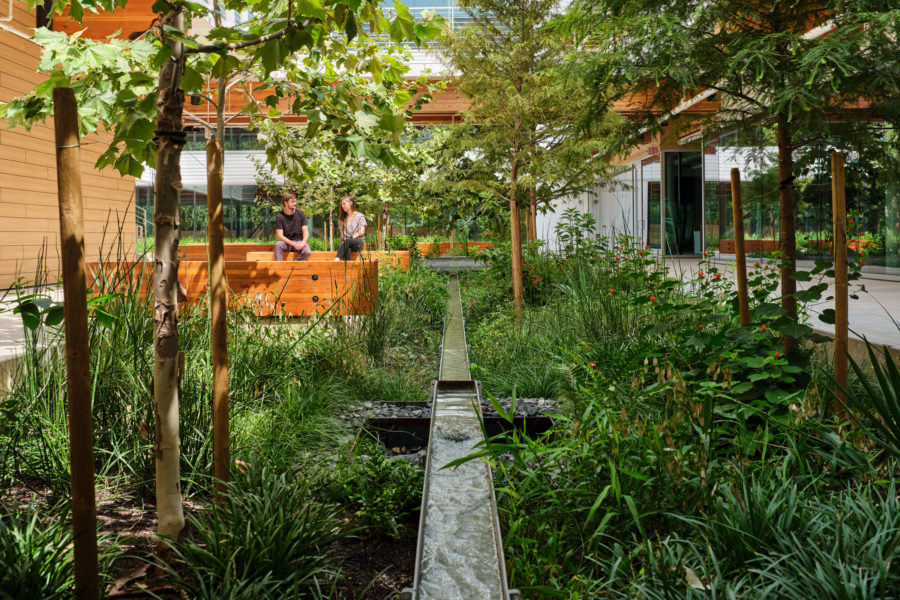
In one of the common outdoor areas, Fifth + Tillery features a water runnel to collect rainwater for irrigation. Photo by Matthew Niemann
We reused a series of 10,000-gallon drums that were left behind by the previous owner to reduce the use of water onsite. They were eventually moved to the side of the entry plaza. We then designed the roof drainage to capture stormwater, which is used to irrigate the landscaping. To tell the story of water onsite, our team introduced a continuous runnel that brings the soothing sound of running water to the space and connects a central fountain to a reflecting pool at the building’s entry. The water feature uses a combination of captured rainwater and condensate to run year-round without depending on potable water, which is often restricted during the hot summer months.
Community Connection at the Core
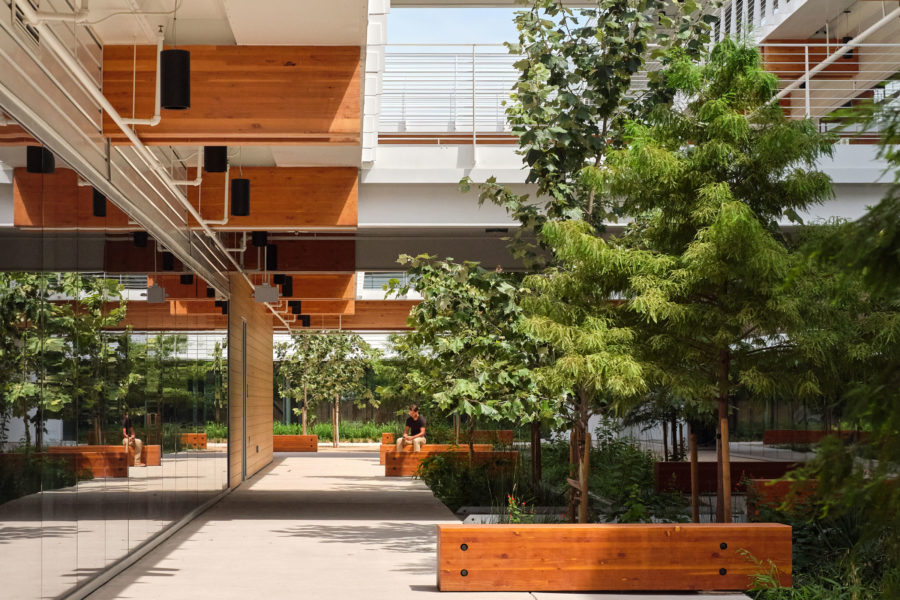
Gensler integrates nature throughout the design to draw occupants into common spaces and breathe fresh air. Photo by Matthew Niemann
The final and most important aspect of Fifth + Tillery was to create a place accessible to the broader community. By turning the building inside out, we designed rich public spaces that are brought to life with vibrant landscaping—connecting the building to the spirit of the neighborhood. Since completion the building has been acquired by CIM Group, who has featured the project in their annual report highlighting their commitment to ESG goals within their real estate portfolio. As building operators they’ve embraced the social aspect of the building and recently welcomed Art Bra Austin to the space, a nonprofit that raises awareness and support for breast cancer survivors.
Fifth + Tillery typifies our collaborative approach to work with clients to expand design possibilities and come up with innovative solutions. We look forward to the continuing activation of the building and its positive contributions to the neighborhood, community, and environment.

